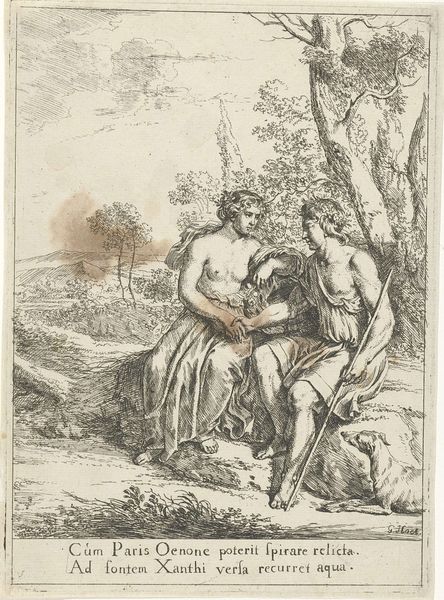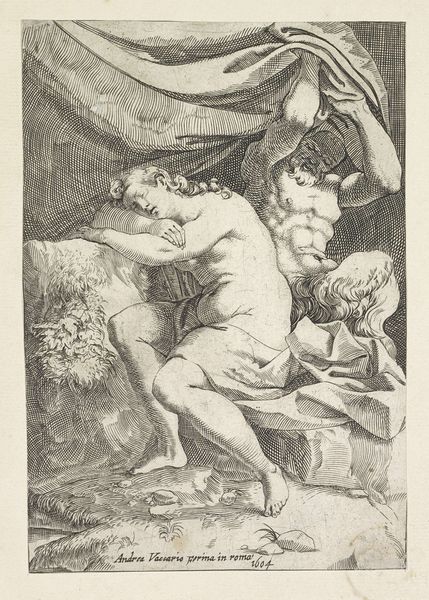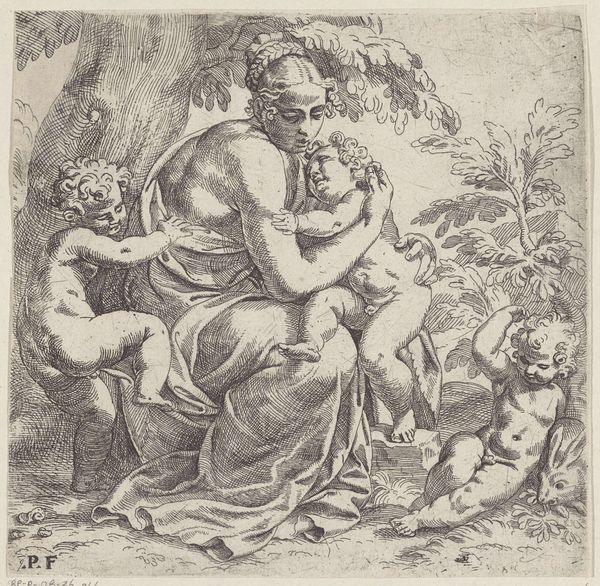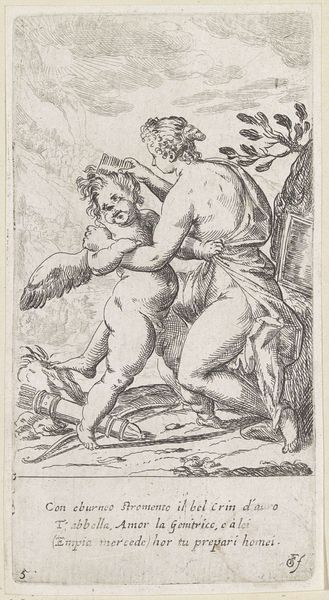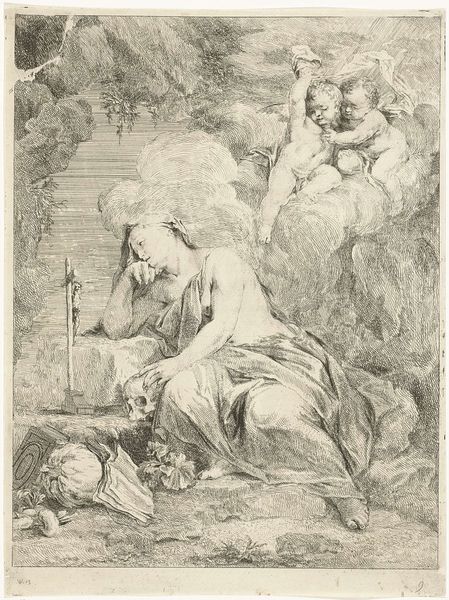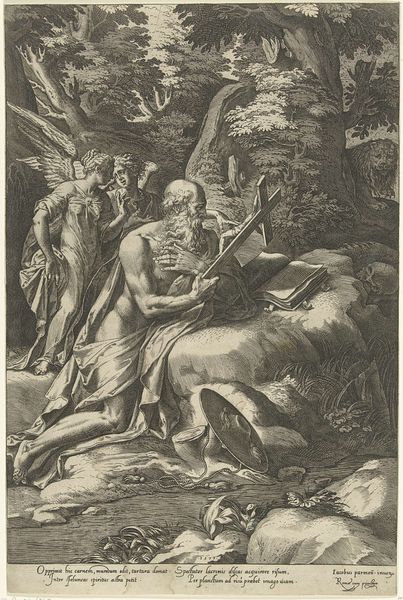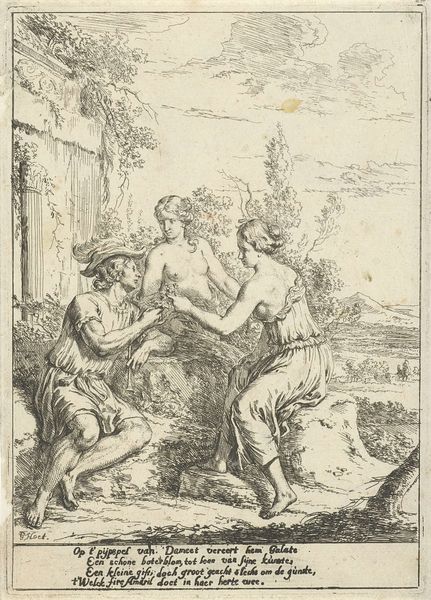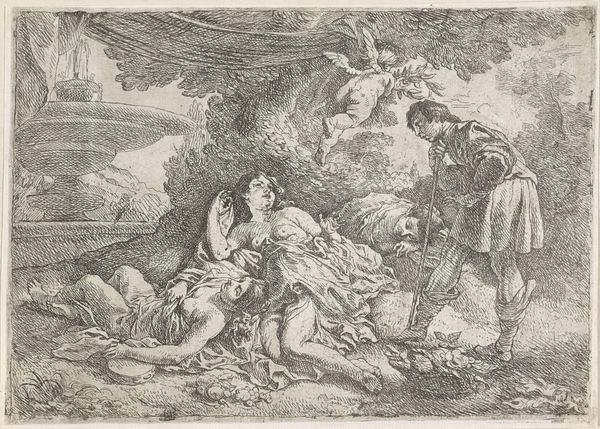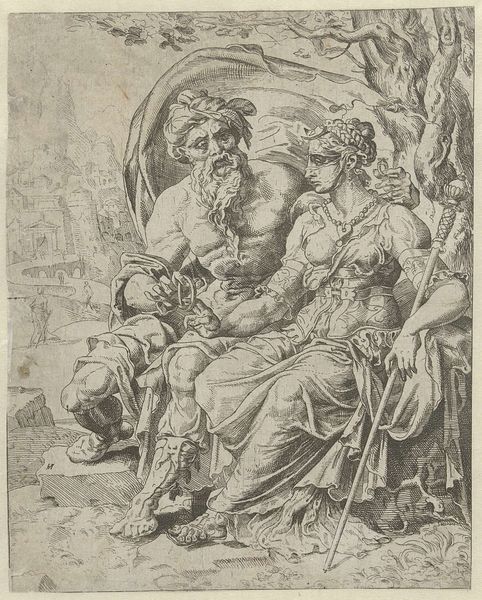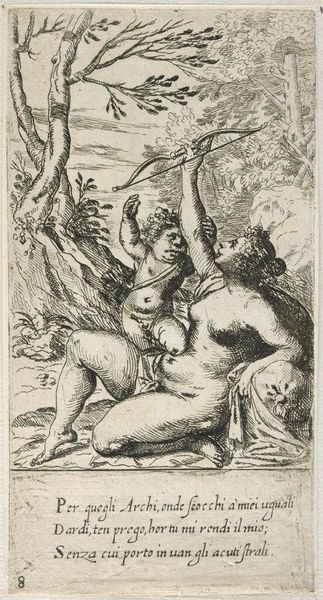
engraving
#
allegory
#
baroque
#
figuration
#
engraving
Dimensions: height 169 mm, width 129 mm
Copyright: Rijks Museum: Open Domain
Louis de Deyster created this etching, “Twee amors,” around 1698. Two cherubic figures dominate the composition, set against a detailed backdrop of foliage and classical architectural fragments. Deyster uses line to create depth and texture. The fine, closely spaced lines in the foreground contrast with the more open, sketch-like rendering of the background, drawing our eye to the cherubs. One cupid stands, bow in hand, while the other reclines on a stone, perhaps contemplating the act of love or mischief. The contrast between activity and repose adds a dynamic tension to the scene. The architectural elements, such as the partial column, are not merely decorative. They ground the scene in a tradition of classical art, while the cherubs themselves—symbols of desire and affection—inject a playful ambiguity. The artwork destabilizes the gravity of classical themes with the levity of cherubic figures. Through the strategic use of line and form, Deyster creates an image that is both formally rigorous and playfully suggestive.
Comments
No comments
Be the first to comment and join the conversation on the ultimate creative platform.
